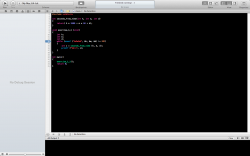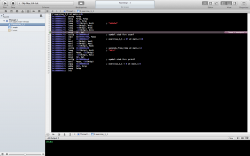Hi developers.
I am using xcode to build some simples command line programs, and now i want to check where is the value that i insert to a variable, i am writing in C language.
Exemple:
scanf("%d", &Var);
well, i run the program and insert the value, then i pause the program executation and go to Product -> Debug -> View memory and then i dont know what address i need to choose to see my value of the variable, anyone can give me some help with that?
Thanks people.
I am using xcode to build some simples command line programs, and now i want to check where is the value that i insert to a variable, i am writing in C language.
Exemple:
scanf("%d", &Var);
well, i run the program and insert the value, then i pause the program executation and go to Product -> Debug -> View memory and then i dont know what address i need to choose to see my value of the variable, anyone can give me some help with that?
Thanks people.



